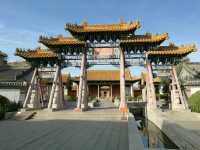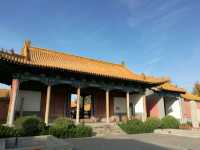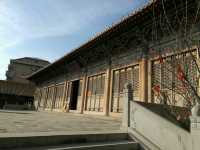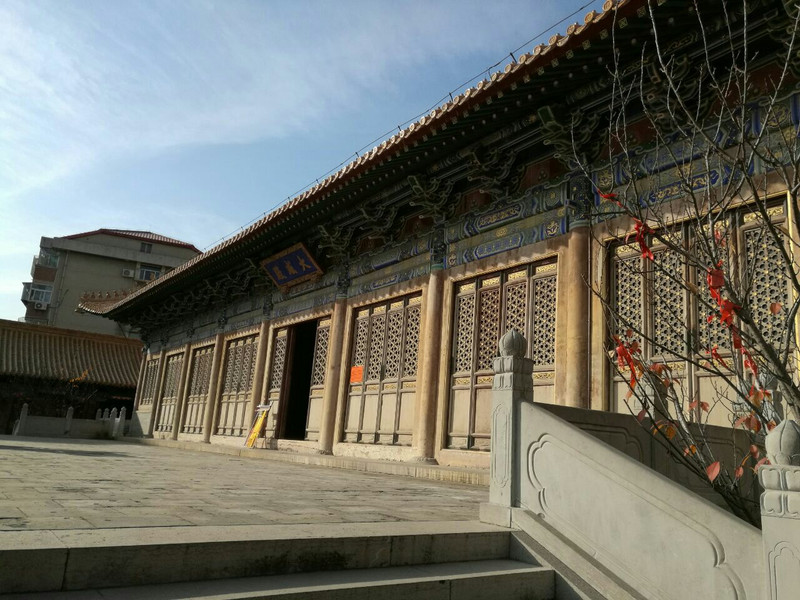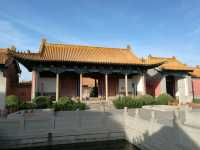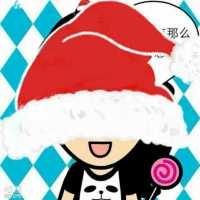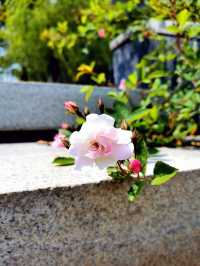I like this place with a sense of history. It's very pleasant to have no tourists at all. The buildings in it are very similar to the Confucian Temple in Qufu. It's the same as the Confucian Temple in Qushuiting Street. It's also very good to walk around and look at it, but it's not small. Look at the buildings.
;
Jinan Fuxue Confucian Temple Review
4.6 /557 Reviews
Popular Destinations
Cebu Travel | Scotland Travel | Dublin Travel | Addis Ababa Travel | Langkawi Travel | Belfast Travel | Vienna Travel | Ibiza Travel | Nice Travel | Greenock Travel | Stoke-on-Trent Travel | Vietnam Travel | Xiamen Travel | Kathmandu Travel | Hanoi Travel | Jakarta Travel | Dartford Travel | Ipoh Travel | Malmo Travel | Stansted Mountfitchet Travel | Seven Devils Travel | Gunzburg Travel | West Melbourne Travel | Vanderburgh County Travel | Colfax County Travel | Ramat Gan Travel | Halle Travel | Benzie County Travel | Darlington County Travel | Castrocaro Terme e Terra del Sole Travel
Recommended Attractions at Popular Destinations
Bangkok attraction near me | Tokyo attraction near me | Manila attraction near me | Hong Kong attraction near me | Seoul attraction near me | Taipei attraction near me | Los Angeles attraction near me | New York attraction near me | Shanghai attraction near me | Shenzhen attraction near me | Kuala Lumpur attraction near me | Osaka attraction near me | Guangzhou attraction near me | Singapore attraction near me | London attraction near me | San Francisco attraction near me | Beijing attraction near me | Macau attraction near me | Bali attraction near me | Ho Chi Minh City attraction near me | Paris attraction near me | Orlando attraction near me | Jakarta attraction near me | Phuket attraction near me | Chicago attraction near me | Toronto attraction near me | Cebu attraction near me | Dallas attraction near me | Istanbul attraction near me | Dubai attraction near me
Popular Attractions
The Bund | The Sanctuary of Truth | Windsor Castle | Genting SkyWorlds Theme Park | Genting Highlands | Tokyo DisneySea | Thames River Sightseeing | "The Song of Everlasting Sorrow" | Everland | Sands SkyPark | LEGOLAND® Windsor Resort | Columbia Pictures Aquaverse | Badaling Great Wall | Alhambra | Summer Palace | Huaqing Pool | Shaanxi History Museum | Play Center | Mercado Parque La Reina | Trentotto | Banjo Paterson Park Playground | Bath Lyogkiy Par | Thermes du Connetable | Universal Studios Singapore | Universal Studios Japan | The Palace Museum | The Old Stock Exchange | London Eye | Sunway Lagoon Theme Park | Underwater World Pattaya
Popular Travelogues
Bangkok Travelogue | Tokyo Travelogue | Hong Kong Travelogue | Seoul Travelogue | Los Angeles Travelogue | New York Travelogue | Shanghai Travelogue | Shenzhen Travelogue | Kuala Lumpur Travelogue | Osaka Travelogue | Guangzhou Travelogue | Singapore Travelogue | London Travelogue | San Francisco Travelogue | Beijing Travelogue | Macau Travelogue | Bali Travelogue | Ho Chi Minh City Travelogue | Paris Travelogue | Phuket Travelogue | Chicago Travelogue | Toronto Travelogue | Dubai Travelogue
Payment Methods
Our Partners
Copyright © 2024 Trip.com Travel Singapore Pte. Ltd. All rights reserved
Site Operator: Trip.com Travel Singapore Pte. Ltd.
Site Operator: Trip.com Travel Singapore Pte. Ltd.


